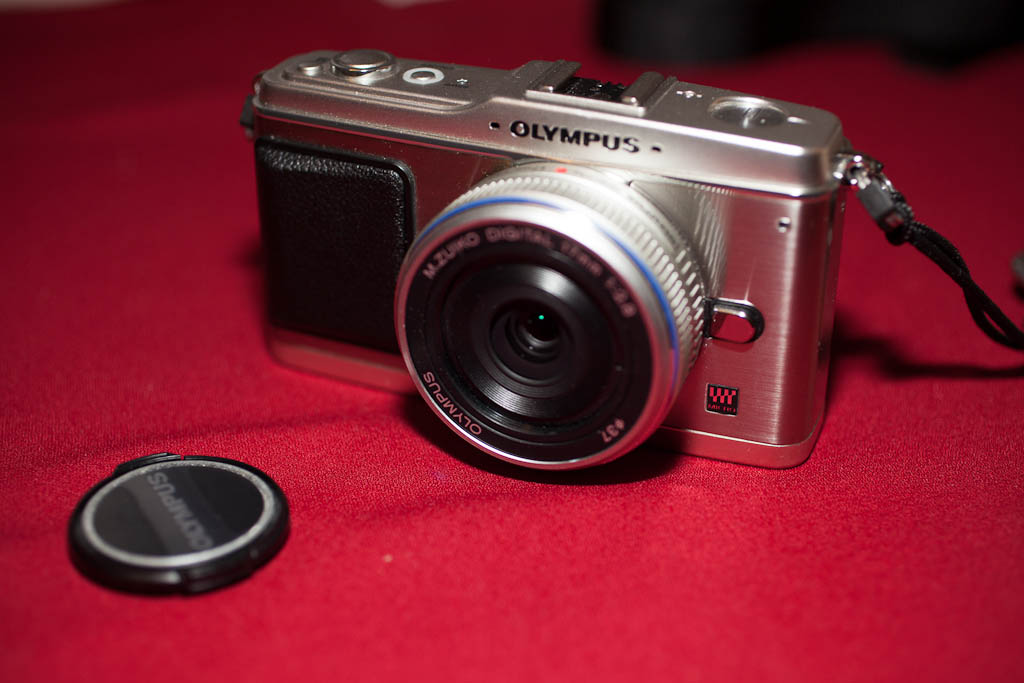There, I said it. The future of interchangeable lens cameras is mirrorless.
Let’s see why.
The SLR design date back from the film days. A design that allow precise framing using through the lens viewfinder, but that has a somewhat complex mechanical design, increasing cost and size. Today, the film being replaced by an electronic sensor, an instant image can be obtained through the lens. An electronic viewfinder will also be through the lens, with all the advantage of the SLR design, and more. Without the need for that complex and bulky mirror box, the camera can be designed to be more compact.
There are a few reasons why DLSR exists and are still somewhat the de-facto design: trade offs.
The first trade off is that you have to change the lens mount to benefit from a more compact design. This made moving from the older film camera to the digital one is not as easy unless you threw away your investments in glass. This was a perfectly valid point in the last decade, and since the move has happened, the problem persists, even for those that started with a DSLR.
The second trade off is the performance of the autofocus system. DSLR use a phase detection system with sensor located in the mirror box. Something that appear to be problematic on a mirrorless camera, and phase detection AF is more performant than the contrast detection system commonly used by mirrorless cameras. Manufacturers have worked out technology to improve the situation a lot. A small category of users that needs it really needs it still, but we are getting there.
But it is time to make the jump.
The market
Currently only 4 vendors still offer DSLR. Canon, Nikon, Ricoh-Pentax and Leica. Sony hasn’t released a DSLR in a while and given their α lineup (mirrorless), I don’t think they will, Olympus has made the switch to M4/3 a while ago already, Panasonic has been mirrorless only as well also with the M4/3 system, Leica is mostly betting on mirrorless and Fujifilm has been kicking it with the X- series, improving at each generation and the GFX medium format.
In August Canon announced the EOS R, their full frame mirrorless system, while they have a EOS M series that feature an APS-C sensor. They just announced new lenses for that system, so it might stay for a little while. And it is much more affordable as well.
Weeks prior to that, Nikon had just announced the Nikon Z, their full frame mirrorless system, after discontinuing the Nikon 1 which wasn’t really a sensible proposal with its miniature sensor.
As for Ricoh-Pentax life is tough. The Pentax K 01 wasn’t really a success, nor was the Pentax Q that disappeared as quickly as it appeared. And now that it is Photokina, it doesn’t seem that Ricoh had anything to announce in that product line.
If anything, the growth on the market for Sony as proven that mirrorless full frame can be a viable option. Sony is clearly the market leader for full frame and Canon, Nikon and Panasonic wants to try to catch up.
Is full frame the future? I don’t think it will be the only but it will be dominant. Panasonic just announced a full frame mirrorless, sharing the lens mount with the Leica SL, while still continuing with the M4/3, and Sigma who barely has presence in the camera body market has announced they were developing a body for the L-mount. I’m confident that Fujifilm can continue with the X-series without moving away from APS-C, with a more compact system that nails the image quality including in low light, at a price lower than the current full frame lineup. Sony will probably keep some of their APS-C mirrorless until they can bring down the price of the α series down enough.
The medium format has a future too for demanding users, but the price is steep. For example, the Fujifilm GFX 50, a “medium” format sensor mirrorless starts at about US$5,000.
The future
I predict that within 5 years, neither Canon nor Nikon will be pushing DSLR, except maybe in a few niche segments like top of the line sports. The Leica S might survive as Leica just announced the S3 just 10 years after the previous iteration but this camera is already in a very niche segment given it’s price. And some of the manufacturers won’t be left unscathed.
